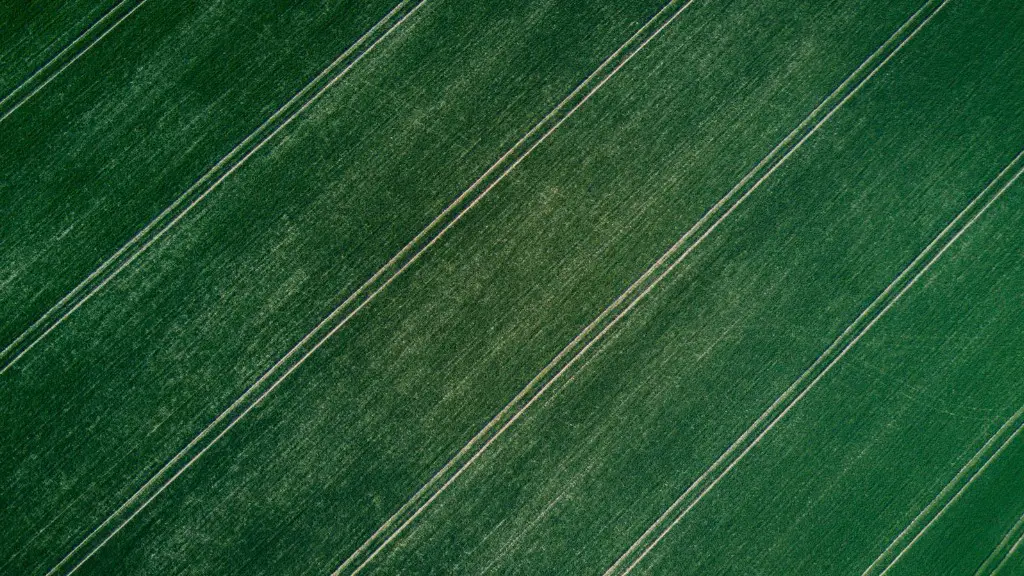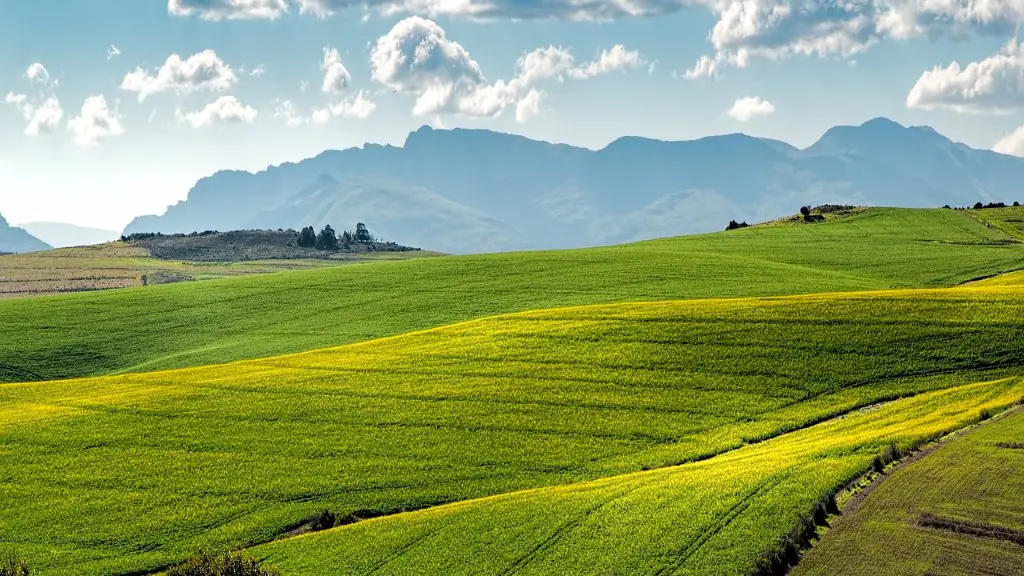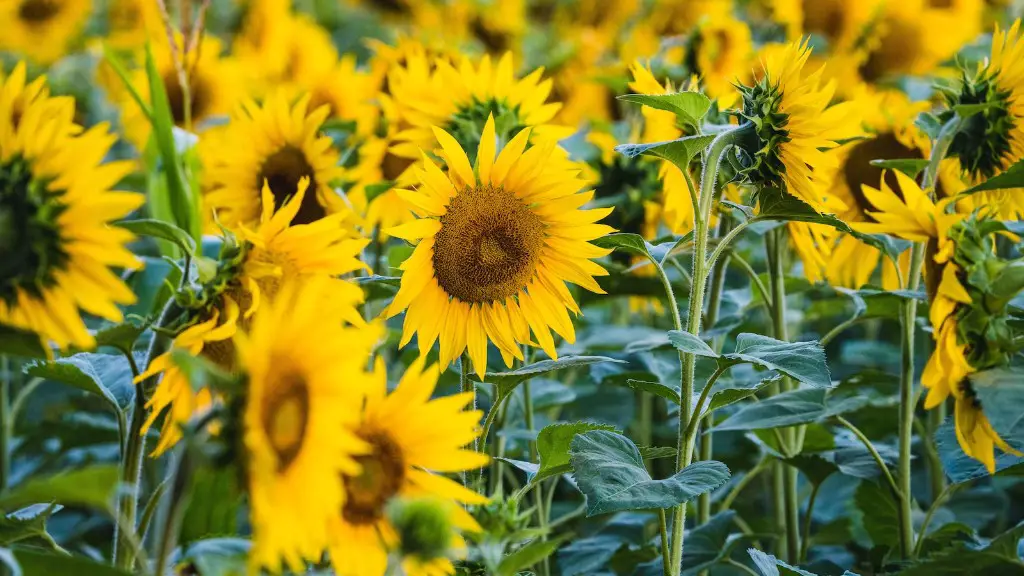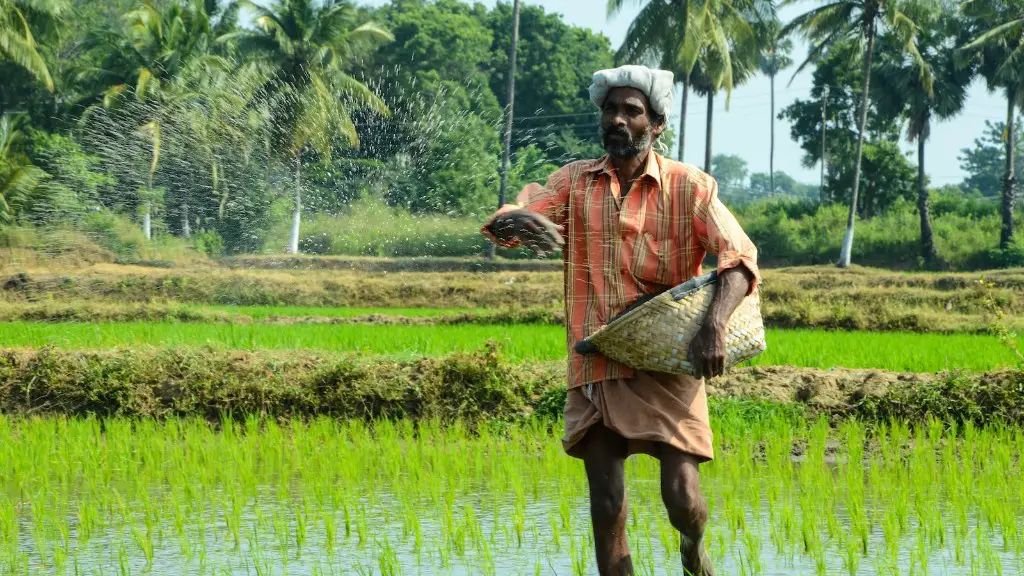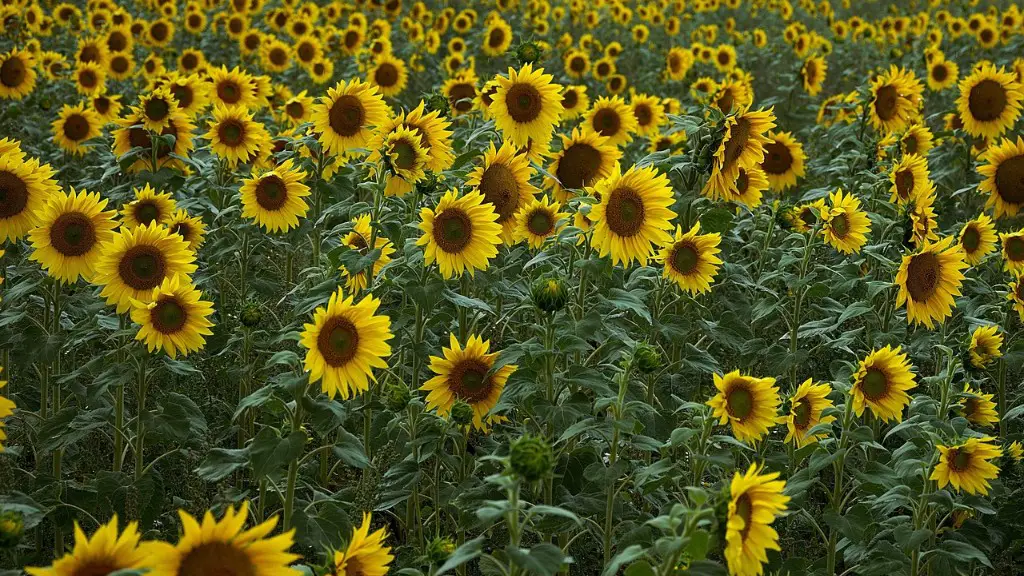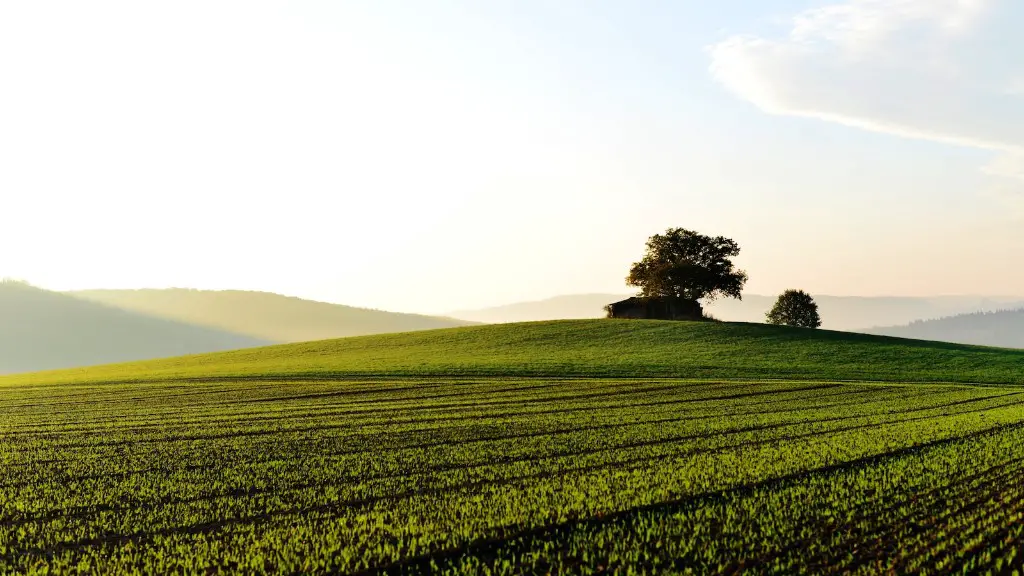Agriculture is a critical component of the global food system, but it also has significant impacts on the environment. Agricultural production accounts for a significant proportion of global greenhouse gas emissions, as well as water use and land-use change. These environmental impacts are likely to increase in the future as the global population continues to grow and demand for food increases. While some of these impacts can be mitigated through better management practices, there is a need for more sustainable and environmentally friendly approaches to agriculture if we are to meet the challenges of the future.
The impact of agriculture on the environment is both direct and indirect. Direct impacts result from the agricultural activities themselves, such as farming, raising livestock, and forestry. Indirect impacts result from activities that support the agricultural industry, such as transportation and processing.
The vast majority of the land used for agriculture is natural ecosystems, including grasslands, forests, and wetlands. Clearing land for agriculture alters these ecosystems, which can lead to soil erosion, lower biodiversity, and changes in the local climate. Agricultural activities also use large amounts of water and energy, which can lead to water pollution and greenhouse gas emissions.
The growing demand for food and other agricultural products has led to intensification of agriculture in many parts of the world. This has often resulted in increased use of pesticides and fertilizers, which can further harm the environment. As agriculture continues to expand and intensify, it is important to consider the potential impacts on the environment and take steps to minimize them.
What are the five main environmental impacts of agriculture?
Soil fertility loss, eutrophication of water bodies, deforestation, climate change and pesticide pollution are five environmental effects of agriculture. Soil fertility loss occurs when the nutrients in the soil are used up faster than they can be replenished. Eutrophication of water bodies occurs when there is an overabundance of nutrients in the water, which can lead to algae blooms and reduced oxygen levels in the water. Deforestation occurs when trees are cut down to make way for farmland. Climate change occurs when greenhouse gases are released into the atmosphere, trapping heat and causing the Earth’s temperature to rise. Pesticide pollution occurs when pesticides are used in agriculture and they end up in the air, water and soil.
Large-scale, conventional farming is not sustainable in the long run. It depletes soil fertility, pollutes air and water, and contributes to climate change. We need to transition to more sustainable methods of farming that focus on diversification, crop rotation, and the use of organic inputs.
What are the 3 main impacts on the environment
These are three major issues that are affecting our environment. Global warming and climate change are causing the Earth to warm, which is affecting the water cycle and causing more extreme weather events. Water pollution is making our water sources dirty and unsafe, and ocean acidification is making it harder for marine life to thrive. Loss of biodiversity is causing populations of animals and plants to decline, and this is having a ripple effect on the entire ecosystem.
Food production is one of the leading causes of environmental problems. The main problems are water use and water pollution, greenhouse gas emissions, environmental contaminants and pollutants, depletion of natural resources, and waste.
Water use and water pollution are the main problems arising from food production. Growing food takes a lot of water, and this water can be contaminated with chemicals, pesticides, and other pollutants. This water pollution can lead to health problems for people and animals, and can also contaminate groundwater and surface water supplies.
Greenhouse gas emissions are another environmental problem arising from food production. The production of food, especially meat and dairy, generates large amounts of greenhouse gases, which contribute to climate change.
Environmental contaminants and pollutants are also a problem. The production of food generates a lot of waste, which can contain harmful chemicals and pollutants. This waste can contaminate the air, water, and soil, and can also lead to health problems for people and animals.
Depletion of natural resources is another problem arising from food production. The production of food uses up a lot of land, water, and other resources, which can lead to habitat loss and deforestation.
Waste is also a problem. The production of food generates a lot of waste
How does agricultural activities destroy the environment?
The impact of deforestation includes pollution of water bodies due to the toxic pesticides and insecticides, slash and burn, which causes erosion, ecological effects (such as carbon sequestration, energy cycle, surface water quantity regulation etc), loss of forest soil and forest watershed due to the heavy tillage that is carrying out.
Harvesting the crop represents a significant amount of nutrients, water, and energy being taken from the land This leaves the land barren, and unfriendly for the growth and development of new organisms and ecosystems This is especially true of land used for industrial monoculture farms. In order to ensure that the land is not left completely depleted of these vital resources, it is important to practice sustainable land management techniques such as crop rotation, cover crops, and using organic fertilizers.
What is the biggest problem in agriculture?
Farmers face a variety of problems, both big and small. Some of the more common problems include climate change, soil erosion, and biodiversity loss. As the world around them changes, farmers must adapt in order to stay afloat. This often means adopting new technologies and methods, as well as being willing to change direction in order to meet the needs of their consumers. above all, farmers must be resilient against the ever-changing global economy.
Fossil fuels – coal, oil and gas – are known to be the largest contributor to global climate change. They are responsible for over 75 per cent of global greenhouse gas emissions and nearly 90 per cent of all carbon dioxide emissions. Despite this, fossil fuels are still being used heavily all over the world, contributing to climate change. There needs to be a greater effort to transition to renewable energy sources in order to help mitigate climate change.
What is the biggest impacts are made on the environment by
The term ecological process refers to all the natural processes that occur in an ecosystem. These processes are important in maintaining the balance of the ecosystem and the overall health of the environment. However, when humans interfere with these processes, it can cause a number of problems for the environment.
One of the biggest issues that is associated with the interference of ecological processes is the loss of biodiversity. When humans disrupt the natural balance of an ecosystem, it can cause a number of species to become extinct. This loss of biodiversity can have a serious impact on the overall health of the environment.
Another problem that is caused by the interference of ecological processes is climate change. When humans disturb the natural balance of an ecosystem, it can cause the release of greenhouse gases into the atmosphere. These gases can trap heat and cause the Earth’s temperature to rise. This rise in temperature can cause a number of problems for the environment, such as the melting of polar ice caps and the rise in sea levels.
The interference of ecological processes is also having a number of impacts on human health. When humans disrupt the natural balance of an ecosystem, it can cause a number of harmful toxins and pollutants to be released into the environment. These toxins can cause a number of health problems for people, including
One of the most pressing environmental problems today is outdoor air pollution. Data from the World Health Organization (WHO) show that an estimated 42 to 74 million people die from air pollution worldwide every year, and nine out of 10 people breathe air that contains high levels of pollutants.Air pollution is a complex mixture of particles and gases that can include anything from soot and smoke to chemicals like carbon monoxide, ozone, and lead. These pollutants can come from a variety of sources, including vehicle exhaust, industrial facilities, and forest fires. While most air pollution is invisible, it can have a serious impact on our health, causing respiratory problems, heart disease, and cancer.
How does agriculture affect climate change?
Climate change is a pressing concern for the agricultural industry. As a result, many farm operators are looking for ways to reduce their greenhouse gas emissions and sequester carbon dioxide from the atmosphere. One way to do this is to change production practices or land use to increase the amount of carbon stored in soil or vegetation. This can have a major impact on the carbon footprint of the agricultural industry and help to mitigate climate change.
As the world’s population continues to grow, the demand for food will put ever-increasing pressure on the land and water resources used for agriculture. This often results in land degradation, such as soil erosion and salinization, as well as eutrophication. Agriculture is also a major contributor to greenhouse gas emissions, which are a major driver of climate change.
What are three issues in agriculture
To address the triple challenge of feeding a growing population, providing a livelihood for farmers, and protecting the environment, we must set the table for sustainable progress. This means creating an enabling environment for agricultural development that is both productive and sustainable. It also means moving away from the one-size-fits-all approach to agricultural development and tailoring interventions to the specific needs of small-scale farmers. And finally, it means putting in place the right policies and institutions to support sustainable agricultural development.
Agriculture is a critical part of the global environment, and many environmental issues are directly tied to it. Deforestation is one of the biggest side effects of agriculture, and it greatly impacts our planet. Soil degradation, waste, and pollutants are also major problems that are caused by agriculture.
What are the main disadvantages of agriculture?
Industrial agriculture has many disadvantages that can impact the environment, human health, and animal welfare. These include deforestation, soil degradation, water pollution, and climate change.
Hunter-gatherers have little or no stored food, and no concentrated food sources, like an orchard or a herd of cows: they live off the wild plants and animals they obtain each day. This means that they are constantly on the move, searching for new sources of food. Because they have no stored food, they are also very vulnerable to starvation if food is scarce.
Farming changed all that. Farmers can store food, and they have concentrated food sources. This means that they can stay in one place, and don’t have to worry about starvation. However, it also means that they are much more vulnerable to disease. If an epidemic strikes, farmers are much more likely to succumb to it than hunter-gatherers.
The other major downside to farming is that it tends to lead to deep class divisions. Hunter-gatherers share everything equally, but farmers have to work much harder than hunter-gatherers. This means that some people end up with much more food than others, and this leads to inequalities.
What are the 10 biggest environmental problems
The top 10 environmental issues are: water, biodiversity and land use, chemicals, toxics and heavy metals, air pollution, waste management, ozone layer depletion, oceans and fisheries, and deforestation.
Climate change is one of the biggest threats to American wildlife and wild places. Communities across the country are already feeling the effects of a changing climate, and we’re working to help those vulnerable communities to confront these challenges.
Conclusion
Agriculture has a number of impacts on the environment. It is a major contributor to deforestation, as trees are cleared to make way for farmland. This can lead to soil erosion and desertification. Agriculture is also a major source of water pollution, as pesticides and fertilizers can contaminate waterways. It can also lead to habitat loss, as farmland takes up space that would otherwise be used by wildlife.
The impacts of agriculture on the environment can be both positive and negative. Agriculture can have a positive impact by providing food and other products that are essential to human life. However, agriculture can also have negative impacts, such as water pollution and soil erosion.
